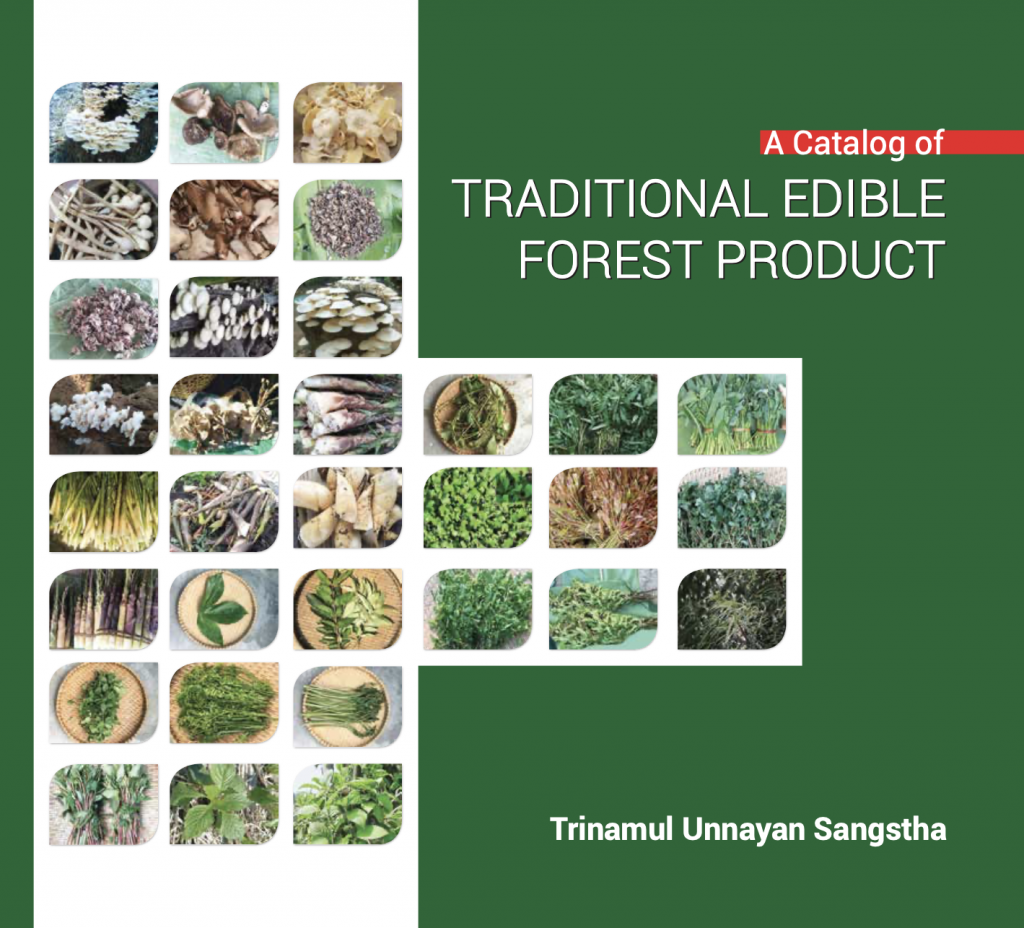A Catalog of Traditional Edible Forest Products by Trinamul Unnayan Sangstha
PREAMBLE
Chittagong Hill Tracts is located in the South Eastern part of Bangladesh that comprises of the three Hill Districts of Bandarban, Rangamati and Khagrachari. It shares common international border with Myanmar and India (the states of Mizoram and Tripura). The region is largely hilly and rocky which made the region different from other parts of the country. There are 11 ethnic communities have been living with their rich cultural practices and heritage from time immemorial. The ethnic communities have been living with subsistence based economy, which is largely dependent on forest. Besides plough cultivation, fisheries, livestock and poultry, the jum or hill firming and gathering of forest products are major sources of traditional livelihood of the people of the region. Therefore, these peoples have strong indigenous knowledge and practices on natural forest management which nurtured and conveyed for generations for maintaining livelihood.
In this regard, TUS has undertaken a project titled ‘Enhancing Food security and Climate resiliency through Traditional Knowledge’ supported by AIPP and PAWANKA-Indigenous Ways of Knowing & Learning Fund. Under this project TUS collected the photographs of traditional edible forest product from Village Common Forest areas in Khagrachari sadar upazila and different places which were available in Khagrachari Hill District, Chittagong Hill Tracts. TUS arrange a validation meeting with 18 community peoples from different villages in Khagrachari sadar upazila. Compiling those photographs, TUS documented and published a catalogue of traditional edible forest product.
Hence, I would like to take the opportunity to express my gratitude to all participant who were present at the validation meeting and contributed to enrich the catalog. I would like to thank my colleagues of TUS who assisted for compiling and validating data. I hope this catalog will help those persons who are interested to do research on climate resilient livelihood in Chittagong Hill Tracts.
Editor

